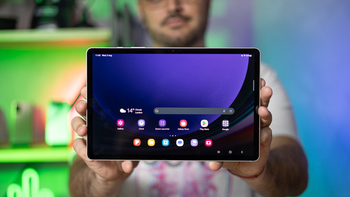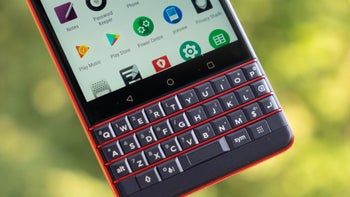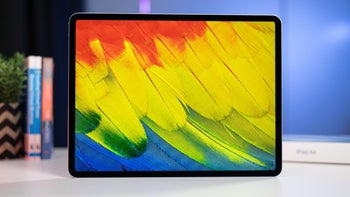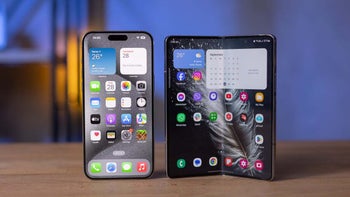Samsung Galaxy S5 vs Galaxy S4: first look
The Galaxy S5 has arrived to an expectedly crazed fanfare, but the initial reaction to Samsung's new handset has been kind of restrained. Some of you were obviously expecting more from the world's largest manufacturer by volume, and that's not an unfair state of affairs. That is, after all, one of the few downsides of being the top dog -- expectations from iteration after iteration double, then quadruple, and so on and so forth.
But is the Galaxy S5 as bad some are making it out to be? It's time we take a preliminary look, and what better benchmark than its predecessor, the Galaxy S4?
Design
Looking at the Galaxy S5 put next to its predecessor, the Galaxy S4, we're struck with an odd feeling. The two are, undoubtedly, cut from the same cloth, and while the S5 is a visible evolution over the S4, there's an important distinction. Namely, while the Galaxy S4 is mostly a more refined version of the Galaxy S III, the Galaxy S5 takes after the more rectangular Galaxy Note 3.
In terms of size, the Galaxy S5 is clearly the bigger handset, both in width and height. But not by a whole much, especially considering the small bump in display size, and the handset's IP67 certification (dust- and water-proof), which always adds extra bulk. That said, we do feel that Samsung has crossed an imaginary line with the S5, and it is now moving away from our own psychological size threshold. The Galaxy S4 is just more wieldy.
All said, when it comes down to which handset we're more enthralled with, we've gotta pick the Galaxy S5. But hey, that's just a preliminary look, and there's a good chance that we're simply drawn to what's new, rather than what's tried, but tested.
Display
The AMOLED display on the Galaxy S5 is said to have gone through some considerable changes, even though we're only talking about a slightly bigger, 5.1-inch display with a resolution of 1080x1920, or 432 pixels per inch. The display is also quite versatile in the way its lit -- it can go as bright as 500 nits, or as dim as a mere 2 nits. Along with new 'adaptive' display perks (tweaks things like contrast and colors outdoors, supposedly), this should position the Galaxy S5 as quite the outdoors device, not to mention that nighttime reading won't put too much stress on your eyes.
In comparison, the 5-inch AMOLED panel on the now aging Galaxy S4 sounds less impressive. Sure, the 1080p resolution ensure the slightly crisper, 441 pixels per inch, but there are considerable drawbacks to it. The Galaxy S4 looks far darker next to the S5, because its maximum brightness is actually below 300 nits (minimum: 9 nits). That's a considerable disadvantage, and one of the big negatives of the display.
Interface and functionality
It's sort of a tradition for Samsung to stockpile all the major software changes for a major release like the Galaxy S5. A new, more refined version of TouchWiz is what we found on the Galaxy S5, with a flatter look. Based on Android 4.4 KitKat, the new software looks more matured. Major new additions include a homepage screen dedicated to My Magazine, which works similarly to BlinkFeed in that it aggregates content from various sources, and there's also the all-new swipe-type fingerprint sensor built into the home button. Another cool, Galaxy S5-exclusive function is an integrated heart rate sensor into the LED flash unit, which works in tandem with the S Health app.
Once again, the Galaxy S4, for all its features, looks a tad barren in comparison. Android 4.4 KitKat has started rolling to what is now Samsung's ex-flagship, and though there's no fancy fingerprint sensor or heart rate sensor built into the hardware, the Galaxy S4 is still quite functional. It's just that it's now falling behind, which is to be expected.
Processor and memory
While we haven't yet had the opportunity to run the Galaxy S5 through our synthetic benchmark suite, initial information about its fancy new chip suggests that it'll have a considerable advantage over the now aging 1.7GHz quad-core Qualcomm Snapdragon 600 found on the Galaxy S4. The new silicon, dubbed Snapdragon 801, is an upgrade over the now ex-king of performance, the Snapdragon 800, with Qualcomm claiming some noteworthy improvements. For starters, the four Krait 400 cores have apparently seen a performance boost the amount of 14%, all the while the Adreno 330 GPU gained even more -- 28%. Lastly, the camera sensor's processing power has, allegedly, been improved by as much as 45%. Impressive, especially considering that these improvements are on top of what the already potent Snapdragon 800 brought to the table.
Next to that, the Galaxy S4's SD600 sounds rather underpowered. But it's not. It's still more than capable of running the latest software without a hitch, and we'd be lying if we told you that you simply have to have this latest chip from Qualcomm. For what it's worth, at least the amount of RAM on the phones is even -- both phones have to make do with exactly 2 gigs.
Camera
The 16-megapixel camera on the Galaxy S5 overshadows the nevertheless excellent 13-megapixel unit on the Galaxy S4. At least from what we're told, and on paper. We haven't had the opportunity to go for a full out camera comparison just yet -- we handled a prototype of the Galaxy S5, after all -- but if we're to trust Samsung, some noteworthy changes have occurred.
For starters, the new camera is touted as having the world's fastest auto focus on a smartphone, a feat that the reasonably speedy unit on the Galaxy S4 can't claim. Moreover, thanks to the new Snapdragon 800 processor, the S5 will, supposedly, capture snaps even faster than its predecessor, which takes about 3.4 seconds to snap a photo, save it, and get ready for another, according to our tests. The S5 can also capture 4K and HDR video, two perks that the Galaxy S4 doesn't check.
Expectations
There was an air of disappointment among fans when the Galaxy S5 went official, and while we get that some aspects, like RAM, didn't seen an upgrade, we can't help but feel this is an overreaction. IP67 certification, a fingerprint scanner and a heart rate sensor -- those alone should qualify as acceptable enough upgrade. Things like the improved Snapdragon 801 and camera unit are just the icing on the top.
Of course, that's not to say that you should jump right ahead and abandon your Galaxy S4. If anything, we'd say that the S4 is still more than adequate for just about every use case scenario. Sure, it's not the latest and greatest thing on the market, but it'll be hard to justify a switch from what is still an excellent device.














Things that are NOT allowed: